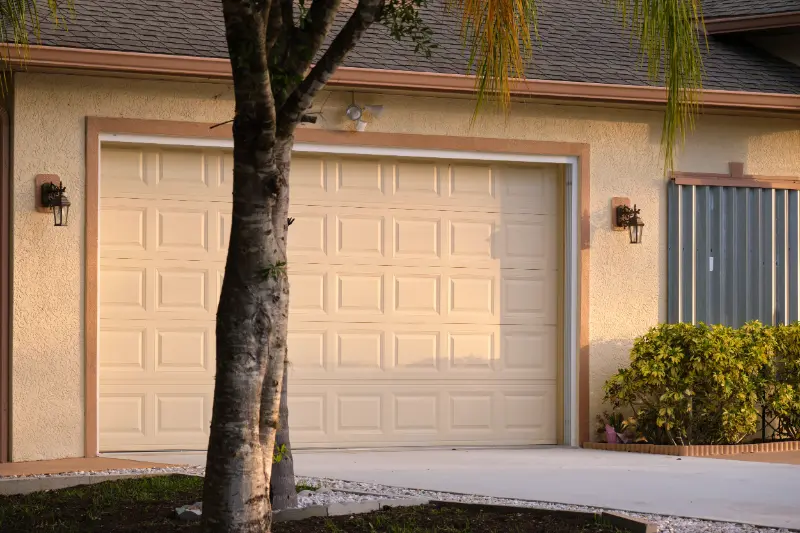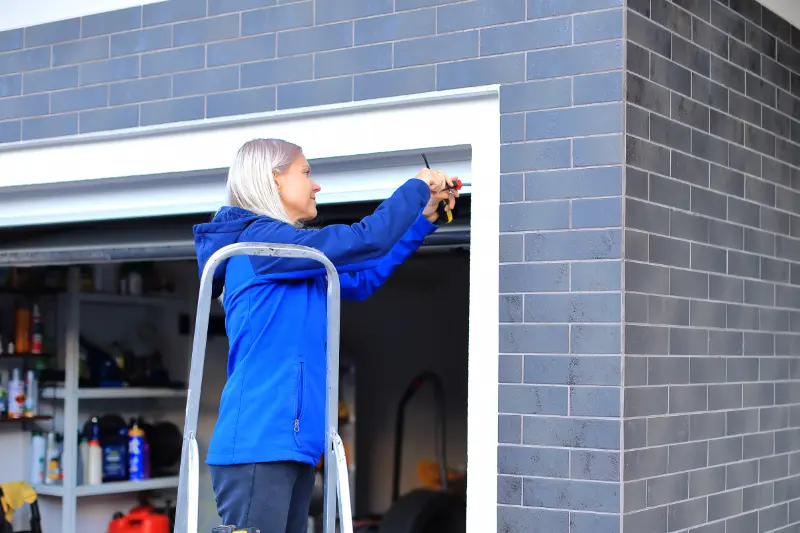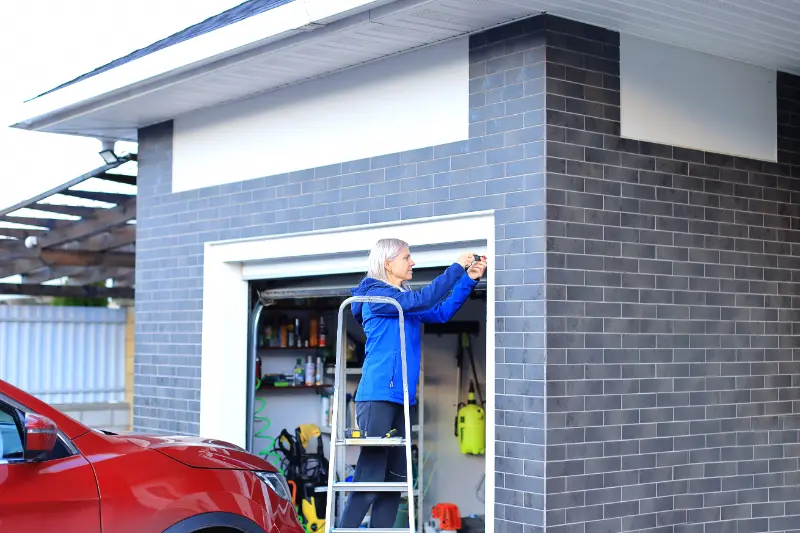Imagine coming home to a house that provides comfort and shelter and protects you and your family from potential threats. This dream can become a reality with the advancements in integrated home security systems. These systems can offer you peace of mind and a sense of safety, ensuring your home is always secure.
In this blog post, we will introduce integrated home security systems, exploring the intricacies of the central control panel to the various layers of protection. We’ll also dive into the exciting world of smart home integration and discuss the benefits of professional monitoring services. Finally, we’ll touch on driveway gate automation and offer guidance on selecting the perfect security system to suit your needs. Get ready to discover how to make your home smarter, safer, and more secure.
Understanding Integrated Home Security Systems
Integrated home security systems are designed to provide comprehensive protection for your home, combining various devices and technologies, including:
- Alarm systems
- Surveillance cameras
- Motion sensors
- Door and window sensors
- Smart locks
- Environmental sensors (e.g., smoke detectors, carbon monoxide detectors)
These devices function with a central control panel to safeguard against burglars and other potential home intruders.
Research has shown that installing a home security system, especially when integrated with home automation systems, can significantly reduce the chances of a property being burglarized. Also, because most security systems utilize smart home products and environmental sensors to increase the security of a home, potential hazards such as fire accidents are easily averted.
Features of An Integrated Home Security System
1. The Control Panel: The Heart of Your Security
The control panel serves as the central hub of your security system, connecting all devices and sensors and communicating with monitoring centers and mobile apps. Hardwired systems utilize electrical wires to connect all components to the control panel, while wireless home security components correspond to the control panel via radio frequencies or a mesh network.
To arm and disarm a security system, you can choose from the following methods:
- Entering a password on a keypad
- Issuing a voice command
- Pressing a key fob
- Utilizing a mobile application
The control panel utilizes Wi-Fi or cellular data to establish a connection with the smartphone app and monitoring center, ensuring seamless communication and control.
2. Multiple Layers of Protection
Home security systems, including DIY home security systems and basic home security system options, provide multiple layers of protection, such as door and window sensors, motion detectors, and glass break sensors, to detect potential threats.
a. Door and Window Defenses
Door and window sensors are pivotal in securing entry points, sending an alert to the control panel when a door or window is opened. These sensors are composed of two components placed adjacent to one another on a shut door and door frame (or closed window and window frame). When the door or window is opened, the sensors transmit a signal to the alarm panel, which then evaluates the situation and alerts you of any unexpected activity in your home.
Contact sensors, glass break sensors, and motion sensors are the most commonly utilized door and window sensors in home security systems. Installing these sensors on your doors and windows establishes a fundamental layer of defense, contributing to your home’s safety and security.
b. Motion Sensors
Motion sensors detect movement within a designated area, triggering an alarm when unauthorized activity is detected. These sensors utilize ultrasonic waves and passive infrared technology to detect environmental alterations, such as movement or temperature variations. The typical range of a motion sensor is between 5 and 10 meters, providing a wide coverage area for detecting potential intruders.
One concern you may have with motion sensors is the potential for false alarms caused by pets. Fortunately, motion sensors can be equipped with pet immunity technology to help differentiate between an intruder and a pet. This technology is designed to be less sensitive to smaller movements closer to the ground where pets typically roam and can identify characteristics such as body weight, heat, speed of movement, size, and mass.
c. The Sound of Safety: Glass Break Detectors
Glass break detectors add an extra layer of protection by identifying the sound of breaking glass. These detectors can detect the breaking of various types of glass, such as windows, doors, and panels. The detection range for most glass break detectors is typically within 15 to 25 feet, providing ample coverage for protecting your home.
Avoiding obstructions such as carpeting, drapes, or plants between the glass and the detector is recommended for optimal performance. Pairing glass break detectors with motion detectors can yield a more expansive security solution for your home, ensuring potential intruders are identified and discouraged.
3. Smart Home Integration: The Future of Home Security
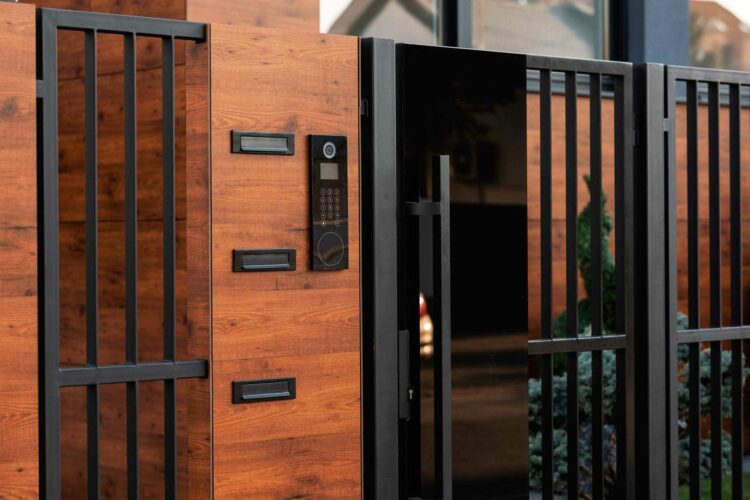
Integrating smart home devices with your security system offers enhanced convenience and control, allowing you to manage your home security from anywhere. By incorporating smart home automation, you’re increasing your home’s overall security and adding a layer of convenience and functionality to your daily life.
Smart home security systems can be controlled remotely through mobile apps, enabling you to arm and disarm your alarm system, view live surveillance footage, and receive notifications of potential threats with a smart home security system.
When integrated with other smart home devices, such as smart locks, thermostats, and lighting, your security system can work seamlessly with your entire home ecosystem, providing a truly connected and secure living experience.
4. Surveillance Features
Surveillance cameras, also known as security cameras, offer real-time monitoring and recording capabilities, allowing you to monitor your property from anywhere at any time. Various surveillance cameras are available for home security systems, including:
- Outdoor cameras (e.g., video doorbells, floodlight cameras, and solar-powered cameras)
- Indoor cameras
- Wireless cameras
- Video doorbell cameras
The utilization of surveillance cameras in home security systems provides numerous advantages, such as:
- deterring criminal activity
- aiding law enforcement
- granting real-time access to footage
- shielding packages
- monitoring household members
By incorporating surveillance solutions into your security system, you’re adding an extra layer of protection that helps to keep your home and loved ones safe.
5. Professional Monitoring
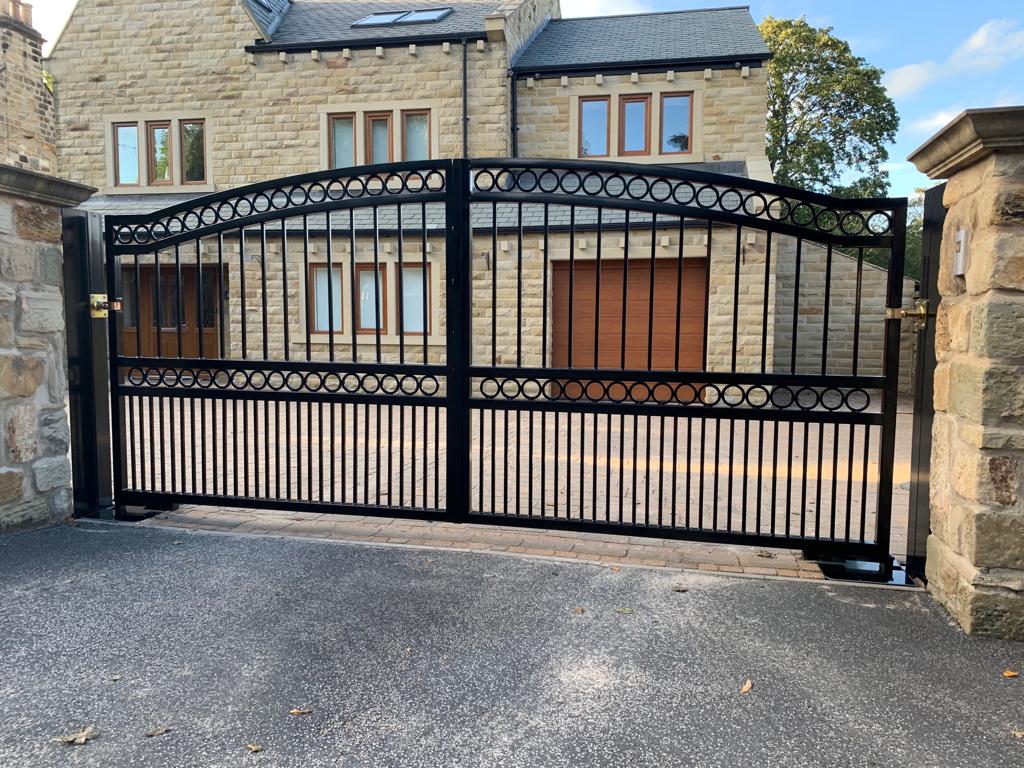
If you have made provisions for this, professional monitoring services provide 24/7 support, ensuring your home is protected even when you’re not there. Experienced dispatchers continuously monitor your home security system and can promptly verify triggered alarms and alert the necessary authorities without requiring your involvement. Nevertheless, with self-monitored security systems, you have control of your home security but may lack the constant vigilance of professional monitoring.
The advantages of professional monitoring services include:
- Providing peace of mind, as there is no need to check for emergencies at home personally
- The capability to validate triggered alarms and notify the relevant authorities without any involvement from you
- Ensuring that your home is constantly monitored and protected, even when you’re away
6. Driveway Gate Automation: A First Line of Defense
Driveway gate automation offers an additional layer of security for both residential and commercial properties. Wilson Electrical and Gate Automation provides expert installation and repair services, ensuring your property remains secure and accessible only to authorized personnel.
Here are some benefits of driveway gate automation for residential and commercial properties.
Residential Elegance and Security
Residential driveway gates combine elegance and security, enhancing your home’s curb appeal and safety. Installing residential driveway gates can significantly improve a home’s curb appeal, as it can add visual interest and enhance its aesthetic appeal. Furthermore, driveway gates can increase the overall value of a property and make it more attractive to potential buyers.
In addition to their aesthetic benefits, residential driveway gates offer a physical barrier that limits access to the property, thereby deterring potential intruders and unauthorized individuals from entering. These gates can also be equipped with security features such as locks, intercom systems, and surveillance cameras, further enhancing your home’s security.
Commercial Strength and Reliability
Commercial driveway gates offer robust protection, creation of a physical boundary of security, controlled access to your property, and enhancement of safety for employees.
Commercial driveway gates are known for their strength and durability, making them an ideal choice for businesses seeking to enhance their security. Wilson Electrical and Gate Automation specializes in repairing, installing, and fixing automated gates for commercial properties of all sizes. With expert gate automation services, you can ensure your commercial property remains safe and secure.
Making the Right Choice Selecting Your Home Security System
Selecting the right home security system involves considering cost, features, and compatibility with your existing devices and infrastructure. By assessing your needs and budget, you can decide on the best security system for your home and install security systems accordingly.
Frequently Asked Questions
What is an integrated security system?
Integrated security systems combine multiple electronic security systems, such as access control, video surveillance, and intruder detection, into a central system. This enables all individual systems to be managed in one place.
What is an integrated alarm system?
An integrated alarm system is a comprehensive protection system that combines fire safety, security systems, and video surveillance components to ensure the safety of a property. Access control points, security cameras, and intrusion alarms are some of its key features.
What is the concept of a home security system?
A home security system is a network of integrated electronic devices and components connected to a control panel, used to monitor suspicious activity and alert the homeowner in case of a break-in. It typically consists of door and window sensors, motion sensors, and a keypad for control.
How do motion sensors work in a home security system?
Motion sensors in home security systems detect movement using ultrasonic waves and passive infrared, sending a signal to the control panel that triggers an alarm or notifies the homeowner when movement is detected.
What is the difference between DIY and professional installation for home security systems?
DIY installation offers a cost-effective option for setting up home security systems, while professional installation provides greater customization and optimal device placement.
Conclusion
Throughout this blog post, we have explored the world of integrated home security systems, revealing the various components and layers of protection that work together to keep your home and loved ones safe. From the central control panel to smart home integration, surveillance solutions, and driveway gate automation, these security systems offer a comprehensive shield against potential threats.
Selecting the perfect security system for your home is a personal journey that requires careful consideration of your needs, budget, and preferences. With the right security system, you can rest easy and enjoy the comfort of your safe and secure home.


